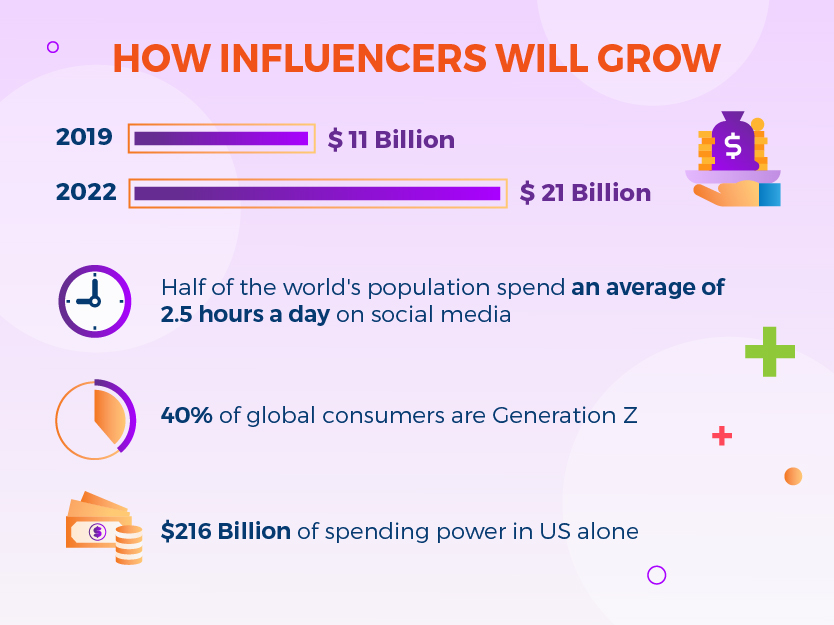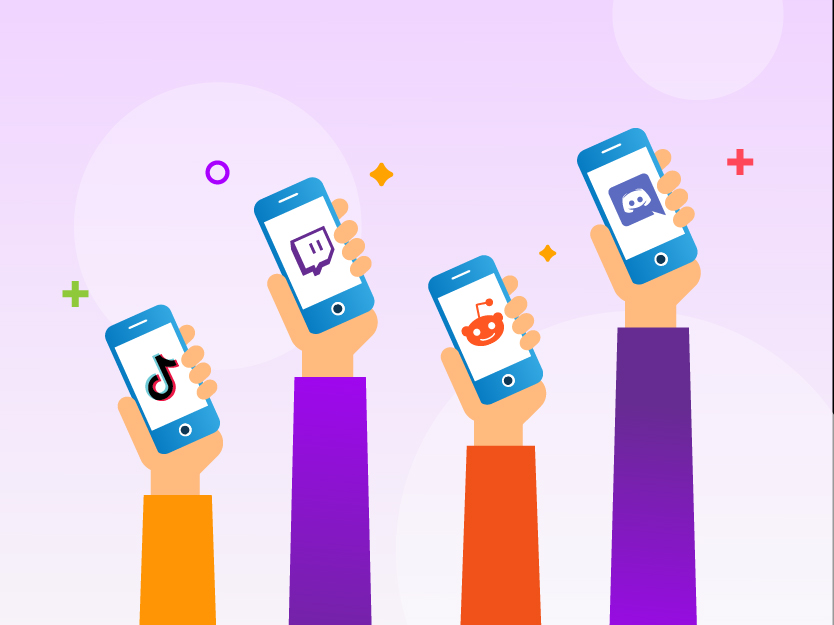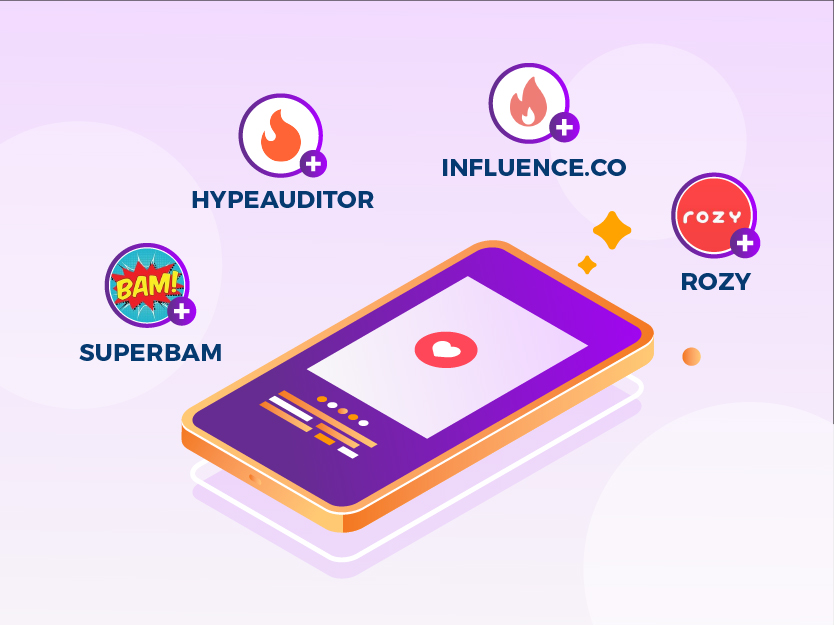

Ignore the media, Influencers are here to stay

Influencers were getting a bad rap for a bit, but it seems they will continue playing an important part in marketing strategies.
Social media celebrities have been in the news for the wrong reasons lately, triggering some media speculation that the era of the Influencer is over. The argument goes something like this.
Companies are realising they were taken for a ride by phony Instagrammers with fake followers who charged too much and delivered too little. And now consumers are waking up too, because our newly serious, post-pandemic society is turning away from frivolous online personalities who flog products they never use from places they never visit.
That’s the argument. But it’s wrong. The Influencer economy is just getting started. Well, it was before COVID-19 hit…
Hear what we have to say about why influencers are here to stay.

The (continued) rise of the influencer
The stats show a sector that was growing rapidly.
Influencers will pocket a tidy $21 billion in 2022, up from $11 billion last year, as they benefit from an unprecedented cultural shift to social media, where over half of the world’s population now spend an average of 2.5 hours a day. While the rest of the advertising industry struggles with people abandoning traditional ads and blocking them online, Influencers are carving out loyal communities of followers on social media platforms that are growing by almost 1 million new users daily.
And this is just the beginning. The first-ever generation to be raised on social media, Generation Z, is coming of age and already accounts for a whopping 40% of all consumers globally. This adds up to $216 billion of spending power in the US alone — for a demographic barely old enough to vote.
As with most industries this growth was unsustainable once a global pandemic hit. All sectors – especially those in the travel, beauty and fashion – began slashing ad budgets, including influencer spend. Influencers were hit hard with an estimated 80% out of work.
That’s not to say the influencer economy is finished, far from it. Leading influencers have diversified their skillsets, become more candid in their postings and embraced CGI content creation. Despite what the traditional media is saying the influencer isn’t going anywhere.

So what’s the problem?
For the uninitiated, an Influencer is a person on social media who attracts followers and affects purchasing decisions. Because they’re generally seen as independent voices, they can earn a higher return on investment than most other marketers.
So this begs the question, if Influencers are effective at marketing, and their social media platforms are gaining audiences, why are so many in the media writing them off?
There are some valid reasons to be concerned. The industry has been roiled by high—profile scandals involving fake statistics and tone—deaf celebrities that have caused overall audience engagement to dip, especially for the so—called macro Influencers with more than 1 million followers.
In October, for example, US regulators slapped the company Devumi with a $3.5 million fine for helping Influencers inflate their followers. And more recently, the media have jumped on Instagrammers such as Arielle Charnas, who incurred the wrath of sponsors and locked—down followers alike when she tested positive for COVID-19 and then immediately lit out for a luxurious holiday home in the Hamptons.
Charnas’ self-serving antics garnered headlines from NBC, Vanity Fair and the New York Times among many others, fuelling the anxiety of brands that were already worried about fake followers.
So, as the media’s poster child for the death of Influencers, Charnas must have seen her audience numbers crater, right? No. She’s lost just 1% of her 1.3 million Instagram followers.
And while everyone was writing off Arielle Charnas and penning obituaries for the Influencer economy in general, no one in the media was talking about Influencers like Chloe Ting.
The Brunei-born Australian is a 34-year-old former statistics analyst who is quietly turning her personal fitness journey into a YouTube phenomenon, from 2 million weekly views in January to 50 million a week in May. Ting now has 7 times more followers than Charnas but no headlines in the New York Times, which is unfortunate because Ting’s rapidly expanding fitness channel is far more typical of the Influencer economy today.
Just ask the brands and ad agencies who are putting down the money. A new survey shows that 91% believe Influencers are an effective marketing tool, with 66% planning to increase their spending on Influencers this year and 72% saying the quality of customers is better than with other forms of marketing.

Say goodbye to celebrities
As a fledgling industry in the fast-changing world of social media, Influencing was bound to have teething problems like we’ve seen with hard-to-track numbers and badly behaved Instagrammers. Another issue was an over-reliance on celebrity Influencers who burned through advertising budgets without generating the expected returns.
In a way, it was understandable that the first Influencers were celebrities because their name recognition easily stood out among the billions of new, mostly unknown voices. They were the signals in the noise around which people could coalesce.
But this initial trend toward celebrities was swimming against a much larger social trend away from celebrity culture. A recent poll found Hollywood to be the least trusted institution in America, and the age of the movie star has likely come to an end.
So, while celebrities were able to vacuum up attention in the early days of Influencer marketing, it didn’t translate into the revenue everyone expected, as expensive macro Influencers with their 500,000 or more followers received much less engagement than Influencers with 50,000 or fewer followers.
Brands and agencies have finally taken notice and adjusted accordingly. Just 22% will use a celebrity this year and 77% will focus their campaigns on micro Influencers and their much more engaged audiences.
“Despite some examples of bad conduct amongst influencers, those are just a small part of the industry. The trend is still there: people trust normal people more, especially when it comes to getting information,” says David Austin, Editorial Content Director at Click2View.
And now Generation Z seems to be tuning out celebrities for good. Two-thirds of them prefer to see real people in ads, which is a complete reversal from the previous Millennial generation that preferred celebrities.

Bigger and better
As the maturing Influencer economy shifts away from celebrities and their shallow engagement to more effective niche Influencers, we’re also seeing it expand into more channels with ever larger audiences.
Take TikTok for example, the app that took the social media world by storm last year with Generation Z accounting for 40% of its users.
Unlike earlier social media platforms, the savvy TikTok audience simply leapfrogged the celebrity phase and went directly to content with amazing results for engagement.
Engagement rates on TikTok are higher than Instagram across the board with Influencers of 100,000+ followers getting more than 5 times the engagement of their Instagram counterparts.
More to come
Whether it’s older platforms like Instagram, newer arrivals like TikTok or the massive communities growing up around gaming, social media is where consumers are going and where brands need to be.
And this Influencer ecosystem isn’t just expanding with the addition of new platforms and billions of users. It’s also improving from within, as hundreds of startups introduce services and tools to help us navigate, communicate, learn, buy and sell inside the social media world.
This is happening even in the business world, according to Sherry Wong of Next 10 Ventures in an interview with Click2View CEO Simon Kearney on The Content Show. “If you’re talking about the B2B space and say, in the business world, you have people on LinkedIn who are considered influencers as well. They are the key opinion leaders and are people who have a following who care about their opinion and their outlook on certain issues.”
These are the people who would write thought leadership articles on LinkedIn, and that technically positions them as an influencer in their field. Even sponsored posts are also becoming more and more common in the professional realm. What this means is that it’s no longer just about fashion, beauty or lifestyle products. Now in the B2B world, it can be about things like SaaS software and tools too.
From numbers that brands can trust to matching the right products with the right followers, these additions to the Influencer ecosystem are already fixing the problems that trigger the negative headlines.
“Even when we talk about B2B marketing, everyone wants to be a thought leader. Basically, in B2B marketing, ‘influencers’ essentially are these thought leaders. This will never go away,” says Artur Akhmetzyanov, Click2View’s Head of Scripted Video & Animation.
The Influencer economy isn’t going anywhere. It’s just the beginning.

Some Influencer startups:
- HypeAuditor – with its database of 10 million Influencers and growing, HypeAuditor sniffs out fraud and helps brands find suitable Influencers.
- Superbam – it takes a lot of time to create great content and Superbam ensures it’s protected, scouring the Internet for copycats and getting Influencers paid for their work.
- Influence.co – a LinkedIn for creators, Influence.co helps Influencers build relationships with other professionals in the creator economy.
- Rozy – did you know that 10,000 Chinese farmers are selling their products live online? Livestream pitches to consumers are increasingly popular and Rozy is lets you make purchases in real—time during the stream.
Read more from Click2View:
- Do you have your digital content marketing strategy down?
- Ever thought about what content marketing and traditional newsrooms have in common?
- COVID-19 seems to be clearing up a little, here’s what to expect of the future of work.
Sign up to our newsletter for more.
Click2View is Southeast Asia’s premiere full-service independent B2B content marketing agency servicing clients like Microsoft, Google, Visa, Prudential, and the Lee Kuan Yew School of Public Policy.








